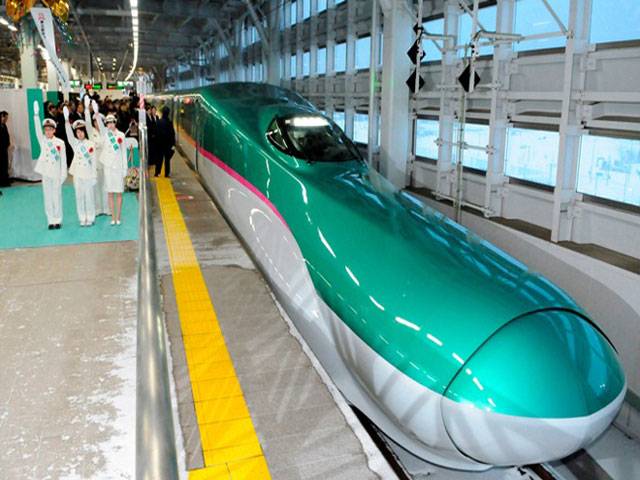AFP
TOKYO
Japan is set to build India’s first bullet train, with Tokyo financing the project through an $8 billion loan to New Delhi, a leading Japanese business daily reported Tuesday.
The Nikkei, which did not cite sources, said the bullet train will link the cities of Mumbai and Ahmedabad and that the two countries will issue a joint statement about the deal on Saturday during Prime Minister Shinzo Abe’s visit to India, where he will meet Prime Minister Narendra Modi. The report comes after Japan failed to win a high-speed train deal in Indonesia earlier this year, losing out to a Chinese proposal. A deal with India would be the second successful case of Japan exporting its bullet train technology to a foreign market, following a deal with Taiwan in 2007, Japanese officials said.
Two officials from Japan’s trade and transportation ministries refrained from confirming the contents of the Nikkei article, telling AFP only that the Japanese government was making “utmost efforts toward such an agreement”. Abe, who departs Friday for India, is to tell Modi that Japan will provide one trillion yen ($8.1 billion) worth of loans during the next decade that would finance more than half of the approximately 980 billion Indian rupee cost of the project, the Nikkei said.
The introduction of high-speed links and bullet trains were one of the key campaign promises of Modi, who was elected in May 2014. India’s vast rail network runs 12,000 trains a day, carrying 23 million people and connecting about 8,000 stations, but has suffered decades of neglect at a time of rapid economic growth during which car ownership has surged and low-cost airlines have mushroomed.
Modi’s government said last year it would open up the railways to foreign investment as they struggle to win back freight traffic lost to roads, coastal shipping and planes. Last year an Indian passenger train set a new national speed record of 160 kilometres an hour (100 miles an hour) - just half the speed of 320 kilometres an hour that the Japanese “shinkansen” can reach.
Wednesday, April 17, 2024
Japan poised to build India’s first bullet train

3:56 PM | March 28, 2024
4:14 PM | March 23, 2024
Tortured body finally identified as lady journalist
April 17, 2024
Police apprehend seven outlaws, recover valuables
April 17, 2024
Training on AI in teaching practices kicks off in AIOU
April 17, 2024
DIG Operations conducts night inspections in Islamabad
April 17, 2024
Nanbais refuse to sell Roti at reduced price
April 17, 2024
Rail Revival
April 17, 2024
Addressing Climate Change
April 17, 2024
Saudi Investment
April 17, 2024
Political Reconciliation
April 16, 2024
Pricing Pressures
April 16, 2024
Workforce inequality
April 17, 2024
New partnerships
April 17, 2024
Shikarpur crisis
April 17, 2024
Peace quest
April 17, 2024
Democratic harmony
April 16, 2024
ePaper - Nawaiwaqt
Advertisement
Nawaiwaqt Group | Copyright © 2024





